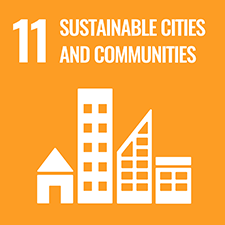
Digital Healthcare Transformation In Vietnam
25 Mar, 2022
Digital healthcare transformation is currently a global trend, bringing great benefits to countries, helping to improve healthcare quality, save time and costs, increase efficiency in medical care and treatment, and synchronize medical information. Not out of this trend, the Vietnamese government is also completing the process of digital transformation in the healthcare system and people's healthcare. The reality shows that the need to apply technology in medical management and expertise is extremely necessary. Moreover, Vietnam is a country with many advantages to be able to successfully apply digital health solutions. The research paper analyzes the current situation of Vietnam's health sector, and lessons learned from around the world, in order to find solutions and recommendations for policy makers to successfully implement the digital transformation to keep up with the times and meet the growing needs of the people.
.jpg)
Situation of digital healthcare transformation in Vietnam
Developing the healthcare system is one of Vietnam's top priorities. Spending in this sector is expected to increase from $15.6 billion (accounted for 6.5 percent of GDP) in 2018 to $42.9 billion in 2028, which is equivalent to a 10-year compound annual growth rate (CAGR) of 11%. Its health expenditure is among the highest in ASEAN. Moreover, health spending per capita is projected to triple, from $161/year in 2018 to $408/year in 2028.
Besides, Vietnam has advantages in applying digital health solutions. Firstly, more than 60% of Vietnamese are under 54, who are more familiar with new technologies. On average, Vietnamese people spend 7 hours a day on online activities, three of which are on mobile devices. Secondly, many policies have been introduced to develop infrastructure and information and communication technologies. As a result, internet access had been made available throughout the country, with a penetration rate of 67% by 2017 and an annual growth rate of 28% (Hootsuite, 2018). Mobile information technology is also growing rapidly in Vietnam, with 4G networks now covering over 95% of households. Thirdly, Vietnam's technology infrastructure is moving towards cloud-based services, delivering opportunities to develop innovative and cost-effective solutions to provide healthcare services. These factors form a foundation for Vietnam's digital transformation in healthcare.
Challenges affecting the Vietnam's digital health transformation process
However, there are still many challenges in Vietnam's digital health transformation process. Patients face several difficulties, from accessibility, quality, to overall experience. These include long waiting time in hospitals, a lack of skilled medical resources, and hospital beds. In 2018, there were 2.9 beds and 0.8 doctors per 1,000 people in Vietnam, lower than the OECD average of 4.7 beds and 3.3 doctors. In addition, 65% of the Vietnamese population lives in rural areas, tending to move to urban areas for better health care. After long periods of travel and waiting, doctors’ consultations are often superficial, and they do not have access to the patient's medical records.
The lack of trust in digital health is also a major obstacle. Patients, especially the elderly, remain skeptical about the legitimacy of the information provided on medical platforms. In addition, confidential information and the ownership of health information are becoming a concern. Since health data is often highly sensitive and personal, patients will be interested in how their data is collected, processed, and analyzed by a service provider and/or a third party.
The digitization process in Vietnamese hospitals is now fragmentary, small and is mainly carried out in central public hospitals and private hospitals in Class-1 cities. Primary healthcare providers have limited financial and technical capability; therefore, they are not willing to adopt health technology. Departments of diagnostic imaging, hematology, oncology and surgery were the first to adopt digital solutions. However, the connection and integration of the systems is still inefficient. Sometimes, doctors and nurses are unable to access patient information stored in the systems of other departments.
In summary, digital transformation is not simply an adoption of information technology but also a comprehensive reform to improve efficiency, competitiveness and create the foundation for long-term development. Though Vietnam is in the early stages of healthcare development, it has attained certain achievements so far. Although the development process still faces many challenges, especially financial constraints, Vietnam can rise to the top of digital health through learning from other countries.
.jpg)
Bluezone is one of the technology applications for Covid-19 prevention and control in Vietnam.
Healthcare development is one of the biggest concerns for almost every country. Currently, digital transformation in the health sector is a global trend, helping to improve the quality of healthcare service, saving time and cost, and increasing the efficiency of medical examinations. In Vietnam, decision No. 749/QD-TTg of June 3, 2020 has been approved by the Prime Minister, "The National Digital Transformation Program to 2025, oriented to 2030". Accordingly, the healthcare sector is prioritized to adopt digital transformation. The sector is defined as "the field of social impact, with the fastest cognitive change, efficiency, cost savings, and should take first priority." Furthermore, The Ministry of Health is also focusing on three objectives in transforming healthcare (Decision No. 5316/QD-BYT): (1) building e-health infrastructure; (2) electronic medical records; and (3) an online one-stop public health service system.
Proposed Solutions
Three factors need to be taken into consideration when implementing the digital transformation process in healthcare:
- Quality: ensuring health care efficiency and improving the patient experience;
- Access: enabling all people to access the health care system, and experience its benefits;
- Efficiency: improving quality and accessibility and reducing healthcare costs.
To do that, the process needs to go through five steps. The first step starts with identifying immediate goals, priorities, and calling for investment. The second step is to improve the data information system. Data for a digital health needs to meet four factors: Relevance, Actionability, Availability, and Interoperability. The third step is to update technology constantly. The combination of quality data and the right algorithms will increase the effectiveness of medical examination, management quality, and reduce human error risk. Fourth, data needs to be secure. The health information system must be closely monitored by responsible managers, clearly identify and constantly update regulations on data use, train health information managers, ensure the safety of data systems, and especially not disclose personal information. The final step is to train and develop technology skills for medical personnel and other users.
On that basis, specific implementation options include:
Building information systems, digitizing medical data
All existing medical data needs to be digitized and stored in an information system. Internal health sector documents should be stored on the system so that all information is accessible. Documents that are allowed to be published widely need to be posted on the medical portal so that people can access them.
Developing information technology applications in disease prevention and treatment
It is necessary to ensure sufficient infrastructure through the implementation of information security monitoring systems, construction and upgrading of information technology systems at all levels. Once the system is capable of serving, it is necessary to deploy electronic health records of the whole population. The construction of medical information systems requires coordination between the state, technology development companies, health workers, and the people. Thus, the new system meets the criteria to ensure technicality, while still matching the actual needs of doctors and patients. Without coordination between the parties in the first place, the cost of adjusting the product when there is negative feedback will be prohibitive.
Facilitate access
Medical portals and the use of electronic medical declaration software should be widely disseminated to the people. This can be done by incentive programs, support packages when people participate, and promotional activities. In addition, for people in remote areas, it is necessary to send health officials and state officials to organize general guidance sessions.
Confidentiality of personal medical information
Since health data is often highly sensitive and private, patients are often concerned with how their data are collected, processed, and analyzed. Information leakage had occurred, which caused people to doubt and lose confidence. Therefore, it is necessary to ensure security, build trust; because only then will people join the system.
Ensuring a solid legal corridor during implementation
Finally, it is necessary to develop a legal framework to ensure consistency among agencies, including the Ministry of Health, the Information Technology Department, the Department of Planning and Finance, the Department of Preventive Health, the Examination Administration, medical treatment, Department of Science and Technology and Training, Departments, Departments, General Department of Population and Inspectorate of Ministries, Departments of Health, and grassroots health units. The role of the Ministry of Health is very important. It is necessary to monitor closely, and frequently check the status of projects, in order to promptly handle the situation. When all of that is ensured, Vietnam can successfully implement the healthcare digital transformation process to improve the health and life quality of Vietnamese people.
Please refer to the full research “Digital healthcare transformation in Vietnam” here. Author group consists of TS. Vo Tat Thang, Tran Thi Phu Duyen, Nguyen Thi Hong Ngoc, Nguyen Minh Huong, Lam Dang Song Nguyen - Health and Agricultural Policy Research Institute (HAPRI), School of Economics - University of Economics Ho Chi Minh City.
This writing is in Series spreading research and applied knowledge from UEH with “Research Contribution For All – Research for the Community” message, UEH would like to invite dear readers to look forward to Newsletter ECONOMY NO. #34 “DIGITAL TRANSFORMATION OF SMALL AND MID-SIZE ENTERPRISE IN THE COVID-19 PANDEMIC”.
News, photos: Author group, UEH Department of Marketing – Communication.
.jpg)

![[Research Contribution] Factors Affecting Gen Z's Intention To Buy Green Cosmetics Through The Intermediate Variable Of Consumers' Attitude](/images/upload/thumbnail/ueh-thumbnail-639018655243295179.png)











![[Research Contribution] The relationship between green finance and environmental degradation: Empirical evidence from countries participating in the "Belt and Road Initiative"](/images/upload/thumbnail/ueh-thumbnail-639015796322698758.png)
